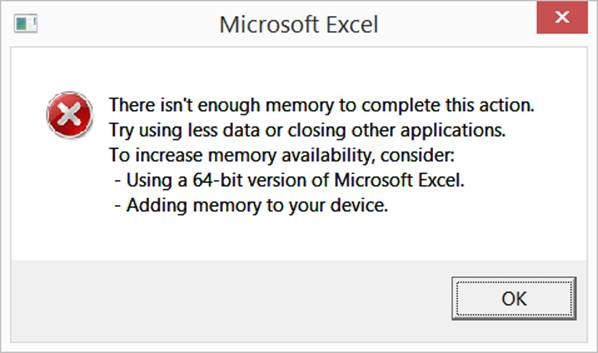Excel 64-bit version
With Microsoft Excel 2010, the application was also started to be made available as a 64-bit version. In terms of functionality, there are almost no differences. However, as far as the limitations are concerned, they could not be greater.
Memory usage
In the 32-bit versions of Excel, the virtual memory is limited to 2 GB per process, i.e. the open workbook and all installed add-ins share the memory. When working with large amounts of data and complex calculations, the limit is quickly reached and causes Excel to run incorrectly or to crash.
Notifications such as: Not enough memory for this operation. Try using less data or closing unneeded programs.
To increase the available working memory, you should:
- use the 64-bit version of MS Excel
- add memory to the device

Another peculiarity is that in Excel 2010 (probably also in Excel 2007) the limitation (OutOfMemory) comes already at 1.4 GB instead of 2 GB. Microsoft diagnoses this problem as memory fragmentation.
As of Excel 2013, a separate process is no longer started for each folder, but everything is executed in one instance, which ensures that the 2 GB limit is reached even faster.
In the 64-bit version, the limit of virtual memory is so large that only the available memory and the available system resources form the limits.
Recommendation
We recommend using the 64-bit version in any case. It is more powerful and has no memory limitation, which ensures that Excel can use all available resources on the system. However, you should make sure that the add-ins you use are compatible with the 64-bit version.